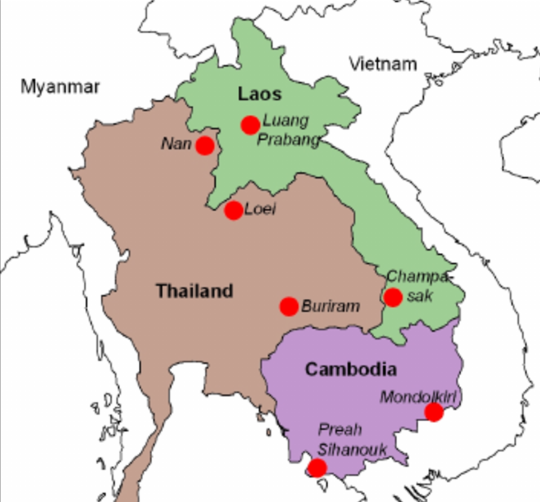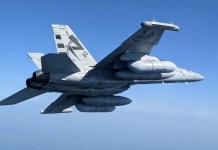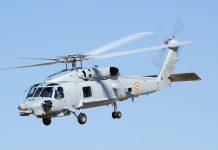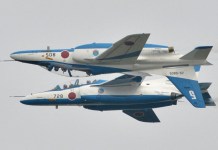The world today is a much dangerous place than it was one decade ago. War has returned to Europe after seven and a half decades of peace, and many frozen conflicts all over the world are flaring again.
The strategic restraint that even conflict-ridden countries had been following for decades has been broken. The year 2025 has already seen two short but intense wars, even between nuclear powers, and now another frozen conflict appears to be escalating into a full-scale war.
In May, India and Pakistan, both of them nuclear powers, fought an intense four-day war, in which they shot at each other’s fighter jets and launched hundreds of drones and cruise missiles. The war, according to the US, was taking a dangerously escalatory turn when American mediation helped the countries reach a ceasefire.
While India and Pakistan have fought four wars, this was the first time that India had attacked mainland Pakistan since the 1971 war.
The very next month, Israel and Iran launched fighter jets and ballistic missiles at each other, marking the first direct military confrontation between the two since the 1979 Islamic revolution.
This time, even the US joined the bombing campaign on Iran, using its GBU-57 MOP bunker buster bombs for the very first time. After 12 days of the war, a ceasefire was agreed to, but not before Iran had launched hundreds of ballistic missiles at Israel and even at the US air base in Qatar. Tehran also claimed to have launched hypersonic missiles at Israel.
Barely a month had passed when another frozen conflict shattered. In keeping with the times where maintaining strategic restraint has become a thing of the past, the conflict escalated quickly, with Thailand losing no time to mobilize its F-16s for bombing a neighbour that has no fighter jets in its arsenal.

While the border dispute between Thailand and Cambodia is over a century long, and like many border conflicts in the Global South today, it is a legacy of badly and swiftly drawn boundaries by colonial masters, this is perhaps the first time that fighter jets have been used between them.
The boundary dispute between Thailand and Cambodia goes back to the 1907 treaty, when Cambodia was a French colony. Thailand and Cambodia both exchanged artillery and small arms fire in 2008, as well as in 2011. However, no combat jets were used.
This time, it was different.
On July 24, Thailand deployed six F-16s near the border with Cambodia. One of the F-16 fighter jets bombed targets in Cambodia.
“We have used air power against military targets as planned,” Thai army deputy spokesperson Richa Suksuwanon told reporters. Twelve people have died in the cross-border fire, with military analysts fearing the conflict could escalate further and get out of hand.
However, a full-scale war between the two might resemble a David Vs Goliath battle, as the Cambodian Army is no match for the Thai Army, which is one of the strongest military powers in the region.
In fact, the last thing Cambodia needs is a full-scale war. The country, one of the three poorest countries in the ASEAN region after Myanmar and Laos, has barely stabilized following decades of war, dictatorships, civil war, genocide, and famine.
Cambodia: A Country Ravaged By War
Cambodia was also at the receiving end of the US bombing campaign during the Vietnam War. Many Vietnamese Communist guerrillas took refuge in Cambodia. The US decided to bomb these supply lines. However, these bombing campaigns also killed thousands of innocent citizens.
In 1975, the Khmer Rouge took power in Cambodia after years of civil war. The Communist regime, led by Pol Pot, perpetrated some of the worst crimes against humanity against their own countrymen.
City dwellers were forcibly relocated to village communes and converted into rice farmers. They were given unrealistic quotas to grow rice. Ethnic minorities were persecuted.
Millions of Cambodians died during this dark phase. The Khmer Rouge ended with the Vietnamese invasion in 1979.

For the next ten years, Cambodia was under Vietnamese occupation. The country again gained independence in 1989.
Years of civil war, dictatorships, and famine have turned Cambodia into one of the region’s poorest countries. These meager resources also meant that the country could not devote many resources to defense, resulting in a significant power gap between Thailand and Cambodia.
Why Thailand Vs Cambodia Resemble David Vs Goliath
According to the Global Firepower Index 2025, Thailand is ranked as the world’s 25th most powerful country. In the same list, Cambodia is ranked 95th, underlining the significant power disparity between the two.
Thailand has a defense budget of US$5.73 billion, whereas Cambodia has a defense budget of just US$1.3 billion.
Thailand’s military is also nearly three times larger than the Cambodian Army. Thailand’s Army employs 3,60,000 troops, compared to just 1,24,000 soldiers in the Cambodian military.
The Royal Cambodian Armed Forces, formed in 1993 through a merger of former Communist and resistance groups, relies heavily on ground troops. The Cambodian army consists of approximately 75,000 soldiers, supported by over 200 battle tanks and 480 artillery units, according to data from the London-based International Institute for Strategic Studies (IISS).
Cambodia’s military dwarfs in comparison to the Thai military. The Thai Army alone has 245,000 personnel, including 115,000 conscripts, and is equipped with 400 tanks, 1,200+ armoured personnel carriers, and 2,600 artillery systems.
However, nowhere is the comparison more stark than in the field of Air power.
The Royal Thai Air Force is one of the best-equipped air forces in the entire region. It has more than 46,000 personnel, 112 combat jets, including 28 F-16 Fighting Falcons. Thailand also ordered 12 Swedish Gripens in June this year. It also has surveillance drones and a fleet of transport and attack helicopters, including several U.S.-made Black Hawks.
On the other side, Cambodia’s Air power is rudimentary. It has no combat jets in its arsenal. This means that Cambodia would be defenseless if Thailand decides to press ahead with its aerial assault.
The Cambodian Air Force has only 10 transport planes and 10 helicopters.
This power disparity is particularly pronounced in naval power. Cambodia’s navy is modest, comprising 2,800 personnel, 13 patrol/coastal vessels, and a single amphibious landing craft.
On the other side, Thailand has a formidable Navy. The Thai Navy employs approximately 70,000 personnel and boasts one aircraft carrier, seven frigates, 68 patrol and coastal vessels, numerous amphibious ships and landing craft, as well as aviation assets such as helicopters and UAVs.
Furthermore, Thailand is a treaty ally of the US, which gives it access to the latest defense tech and platforms.
In short, the Cambodian military appears to be no match for the Thai military, at least on paper. However, China could be the joker in the cards, as Cambodia has recently grown very close to Beijing.
In Cambodia, China is building a huge airport and has financed the construction of government buildings and the country’s first-ever expressway. China has recently refurbished the Ream Naval Base in Cambodia, where Chinese warships now dock.
In short, while Cambodia may not be able to stand against Thailand in a full-scale war, the conflict in Southeast Asia could provide a diplomatic opening for China to enhance its influence in this strategic region.
- Sumit Ahlawat has over a decade of experience in news media. He has worked with Press Trust of India, Times Now, Zee News, Economic Times, and Microsoft News. He holds a Master’s Degree in International Media and Modern History from the University of Sheffield, UK.
- VIEWS PERSONAL OF THE AUTHOR.
- He can be reached at ahlawat.sumit85 (at) gmail.com




